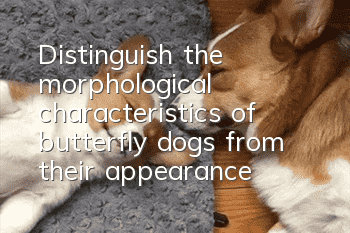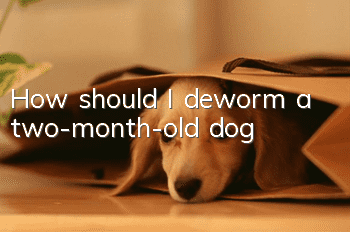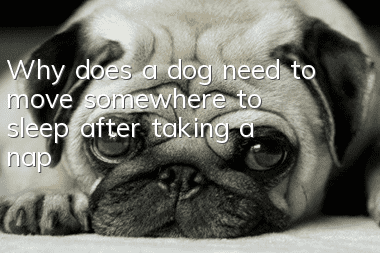Distinguish the morphological characteristics of butterfly dogs from their appearance

Although many pet friends like Guogu, many pet friends don’t know anything about dogs at all. Some of them can’t even tell the difference between Butterfly Dog Chuanchuan and Butterfly Dog. There is no other way. The editor has to learn more about Butterfly Dogs here. Basic knowledge of the butterfly dog. The following are the appearance characteristics of the butterfly dog. Friends who don’t know how to pet can learn about it:
Body shape: shoulder height 20-28cm, weight 4-4.5kg. The proportions of the body are that the body length is slightly greater than the height at the withers.
Head: The head is small, medium width, slightly arch-shaped head, and round nose.
black. The eyebrows are clearly angled. The snout is sharp. In the center of the head, there is an obvious strip of white spots sandwiched between the main color stripes of the body, which may be wide or narrow.
Eyes: dark in color, round, not protruding, medium size, with alert eyes. The inner corner of the eye and the short end of the eye are in the same straight line. Black eye sockets.
Ears: Big ears, separated on the left and right, with the base behind the head. Varieties with rich decorative hair are better. Erect ears or floppy ears, large ears with rounded tips, located relatively back on both sides of the head.
(1) The erect ears extend diagonally, resembling the wings of a flying butterfly. When alert, each ear is carried back to form an angle of approximately 45 degrees with the head. The pinna should be strong enough to hold the entire ear upright.
(2) The drop-ear type is the same as the general butterfly dog we know. It is similar in other aspects, but the ears are drooping and completely downward.
Defects: small ears, too pointed ears, too high ears; one ear is erect or part of the ear is droopy.
Skull: The head is small. The skull is of medium width and slightly domed between the ears. The stop is well defined where the muzzle meets the head.
Body: Longer than tall, not too strong, with medium chest and straight back.
Neck, Topline, Body: Neck is of medium length. Topline: Straight and level. Chest of medium depth with well sprung ribs. Tuck the abdomen upward.
Forequarters: The shoulders are well defined and slanted back without affecting movement. The forelimbs are slender and have fine bones but must be very straight. Dewclaws can be removed. The feet are thin and long (the toes do not turn inward or outward.
Hindquarters: Properly developed and well angulated. The hind legs are slender and have thin bones. When viewed from behind, the legs are parallel. Hocks turn neither in nor out. If there are dewclaws on the hind feet, they must be removed. The feet are thin and long, and the toes do not turn inward or outward.
Limbs: The bones are strong and parallel. There are decorative hairs on the back sides of the forelimbs, and the decorative hairs on the hind limbs are like trousers. The dewclaws on the forelimbs can be removed, but if there are dewclaws on the hind feet, they must be removed.
Feet: Slender like rabbit feet, with very raised toes and covered with fine hairs. The feet are thin and long, and the toes do not turn inward or outward.
Tail: The tail is long, with a high base. The tail has large feather-like decorative hairs and is curved toward the back. The tail is long, set high at the base, and rests on the back. The tail is decorated with long, flowing feathers. The feathers on the tail hang down the sides of the body. Faults: Tail set low; not carried over the back or too short.
Coat: The coat is rich, long, fine, silky, elegant, straight and elastic. The hair on the back and sides of the body is straight. The chest is richly feathered. No undercoat. The hair on the head, muzzle, front of the forelimbs and hind limbs from the paws to the hocks is tight and short. The edges of the ears are beautifully feathered, and there are medium-length, soft and smooth hairs inside. There is long feathering on the back of the front legs, which decreases to the ankle. The area from the hind legs to the hock is covered by "breeches" (also called culottes). The hair on the feet is short, but may be covered with fine feathering.
Color: The ideal color is always white with other colored markings. On the head, the color must be a color other than white that covers both ears, front and back, and extends to the eyes without being disconnected in the middle. A solid-colored head, starting from the tip of the nose and with a white vein in the middle of the face, is preferred. Symmetry of the facial pattern is important. The size, location, shape, or even the presence or absence of colored markings on the body does not matter. As long as there is enough melanin in the eye circles, nose and lips, it doesn't matter what color they are. The following are serious faults: Colors other than white do not cover the ears (front and back) or do not extend from the ears to the eyes. A ring of white around the ears or a small amount of white hair scattered over other colors is not considered a serious fault if it does not affect the butterfly appearance. Any dog that is all white or has no white color is disqualified.
Gait: Easy, fast, calm and elegant. There should be no paddling movements or stiffness in the hips during walking.
Temperament: Happy, alert, and friendly, neither timid nor aggressive.
- Why do dogs get acute encephalitis?
- Symptoms of dog stomatitis
- What are the symptoms of dog pregnancy?
- The sale and breeding of Afghan dogs is prohibited in the country, no matter how rich you are!
- What to do about dog skin diseases? Will it heal on its own?
- Dogs also need to play, the importance of toys to dogs!
- How to heal dog corneal ulcers faster
- Will dogs get angry if they eat goat milk powder in summer?
- How much does a Hadoli Pomeranian cost? How much does it cost? If you don’t know how to choose, how do you decide?
- Where is the dog neutered?



